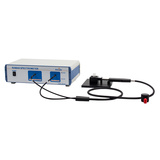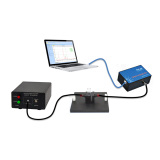搜全站
搜展位
解决方案
采用纳米微粒跟踪分析测定乳胶标准尺寸
应用领域
石油/化工检测样品
其他检测项目
标准尺寸NanoSight 仪器有个独特的功能,就是可以在悬浮液中直
接观察和测量纳米颗粒。颗粒可视化可以同时对每个颗粒测量
尺寸,克服了与光子相关谱(PCS,或者动态光散射)等有关
技术所存在的固有问题。
纳米颗粒产生的光散射强度与半径公式遵循能量公式,
并且随瑞利粒子1的六次方增大而增大。因此PCS(由总体颗
粒产生的总散射光)虽然可以获得平均颗粒大小但是很难区
分区那些是数量少的大颗粒还是是污染物。从另一方面来
说,电子显微镜不仅在样品准备和成像上耗时,而且只能观
察一个小区域,因此分析结果可能是以偏概全的。

暂无关联产品
悬浮液中病毒和噬菌体含量的快速分析
应用领域
生物产业检测样品
其他检测项目
病毒和噬菌体含量运用激光技术的纳米微粒跟踪分析新系统可以用于液体中实时的直
接或单独观察到纳米颗粒物如病毒和病毒聚集体,还可以观察到高分辨
率颗粒物大小的分布轮廓。该技术具有快速、可靠、准确并且成本低,
正因为这些特点使之成为现存纳米颗粒分析方法(如动态光散射(DLS)、
电子相关光谱(PCS)、以及电子显微镜(EM)方法)的很好的替代或
者补足。
该仪器可以同时、直接测量单个粒子扩散系数,并且用户只能用专用的
纳米粒子跟踪分析(NTA) 软件套件自动对样品中的病毒和聚集体计数
和测量尺寸。图像显示结果表示为颗粒大小/颗粒数(或者颗粒大小/相
对亮度)。这种单个颗粒的分析方法克服了那种只能给出平均颗粒大小
分布的数据的颗粒分析系统所存在的固有的局限性。

暂无关联产品
蛋白质中聚集体的直接可视化、尺寸测量和计数
应用领域
制药/生物制药检测样品
生物药品药物研发检测项目
聚集体的直接可视化、尺寸测量和计数检测蛋白质聚集状态对了解生物医药产品的稳定性
和功效是至关重要的。当有蛋白质聚集体时,对产品的质
量的生物活性和原免疫性两方面有很大的影响。
很多聚集体遇到生物样品会按照大小和特性排列(如:
可溶的和不可溶的,共价的和非共价的或者可逆的和不可
逆的)。蛋白质聚集体的范围跨度很大,从小型的低聚体
(纳米级)到包含成百万的单体单元构成的不可溶的微米
级的聚集体。
在制造过程(细胞培养、提纯、形成)、贮存、分配
和产品处理过程中的任何一步都可能产生蛋白质聚集体。
它可能是由于各种压力引起的,比如,搅拌、暴露在极端
的pH下、温度、离子强度或者各种界面(如,气-液界面)。在
高蛋白含量(像单克隆抗体形成的情况)情况下,会出现
进一步增加聚集体的可能性。
因此,在开发、制造以及药物的后续贮存和描述产物时
都必须仔细描述和控制聚集体。同样地,可以通过监测聚集
体的状态,修改或者优化生产过程来实现。
现在NanoSight提供一种以激光为基础的纳米粒子跟踪
分析(NTA)的新系统,它可以使纳米粒子(如蛋白质聚集
物)直接在液相中实时地观测到单个的颗粒并且对其计数。
此外还可以获得高分辨率的粒度分布图。
该技术具有快速、可靠、准确并且成本低,正因为这
些特点使之成为现存纳米颗粒分析方法(如DLS(又称电
子相关光谱PCS,)或者电子显微镜(EM))的很好的替
代或者补足。

暂无关联产品
荧光颗粒物的动态检测
应用领域
其他检测样品
其他检测项目
显谱、尺寸和数目NanoSight 的LM 系列的新型荧光仪器不仅能够实
时跟踪单个荧光纳米颗粒还能测定标记的颗粒尺寸大小
和浓度。在光散射模式下可以测定颗粒物总数,然后在
荧光模式测定时与标记颗粒物浓度进行对照,从而知道
体系中荧光颗粒物的含量或荧光标定比率。

暂无关联产品
如何测量食品包装中的氧气含量
应用领域
造纸/印刷/包装检测样品
包装检测项目
氧气含量今天的食品企业越来越关注食品的营养性和功能性,但维生素、益生菌不饱和脂肪酸等营养物质对氧气非常敏感,极其容易被氧化。因此企业需要改善包装的密封性,同时在包装时充氮气,减少食品包装中氧气的含量,以保持食品的营养成分和品质。传统探头无法测量狭小的顶层空间中的氧气含量,并且没有一种探头既可以测量气相也可以测量液相中的氧气含量。本文中利用荧光淬灭微型探头可以顺利测量食品包装袋狭小顶层空间中的氧气含量。
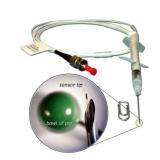
共2台
美洲鳗苔草对土壤含氧量和土壤湿度关系的影响
应用领域
环保检测样品
土壤检测项目
生物 许多湿地植物都面临着严峻的土壤问题。化工生产使土壤产生缺氧症和植物毒性化合物。为了维持一个有氧呼吸的湿地植物根系产生通气组织,证植物体通过地下器官有效组织氧气输送。此外湿地植物能够向土壤中释放氧气,这反过来又影响湿地植物曝气,可以大大影响土壤化学,通过需氧根围保护根部。通过植物通气组织的地下器官释放氧气的实验在实验室已经得到很好的验证并记录,但没有在野外条件下的相关实验记录。
在这项研究中,我们进行氧饱和度动态测量,同时测量了土壤含水量和小气候参数。测量时间为2001年7月至10月,实验对象为盖有 Carex rostrata Stokes的一些低地泥炭。氧饱和度量化使用最新才(德国Presens 公司microoptrodes)光学传感器。 C. rostrata的存在显著提高了土壤中的氧气含量,在有Carex rostrata覆盖时的氧饱和度 (56.0%) 明显高于无植被(26.6%)。含水量波动(变化)时,两块地的氧饱和度变化都很明显。增加土壤水分含量在两地块引起氧饱和度剧烈下降,并导致缺氧的对照区。在有C. rostrata存在时,含水量较高时土壤中的氧气显著下降(68.5%,较对照区的67.5%),这是因为在测量时水的平均含量在67至69%之间浮动。
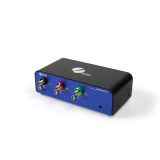
共2台
Micro-optodes in sea ice-种新的方法,研究海冰形成过程中的氧动力学
应用领域
环保检测样品
环境水(除海水)检测项目
其他在海冰形成的过程中将光学微氧传感器(Micro-optodes)冻结在冰中,直接测量其中的氧动力状态。
Oxygen micro-optodes were used to measure oxygen dynamics directly within the microstructure of sea ice by freezing the sensors into the ice during its formation.The experiment was conducted in a 4 m3 mesocosm filled with artificial seawater and inoculated with a unialgal culture of the common Antarctic ice diatom Fragilariopsis cylindrus (Bacillariophyceae) to a final chlorophyll a (chl a) concentration of 11 μg l–1. Ice growth was initiated 7 d after inoculation by reducing the air temperature to –10 ± 2°C and terminated 17 d later. The final ice thickness was 27 cm. One optode was frozen into grease ice and 2 others into the skeletal layer of the growing ice sheet. Increasing oxygen concentrations during ice crystal formation at the water surface and the ice-water interface revealed a strong inclusion of oxygen, which was either physically trapped and/or the result of photosynthesising diatoms. The major portion of oxygen was present as gas bubbles due to supersaturation as a result of increasing salinity and oxygen production by diatoms. An increase in salinity due to a concurrent decrease in ice temperatures during subsequent sea ice development reduced the maximum concentration of dissolved oxygen within brine. Thus, dissolved oxygen concentrations decreased over time, whereas gaseous oxygen was released to the atmosphere and seawater. The sensors are a significant advance on more conventional microelectrodes, because the recordings can be temperature and salinity compensated in order to obtain precise measurements of oxygen dynamics with regard to total (dissolved and gaseous) and dissolved oxygen in sea ice. Optodes do not consume oxygen during measurement over a long period under extreme conditions, which is another advantage for long-term deployment in the field.

共1台
人工湿地污染地下水处理生物降解一氯代苯
应用领域
环保检测样品
环境水(除海水)检测项目
有机污染物The degradation of monochlorobenzene (MCB) was assessed in a constructed wetland treating MCB contaminated groundwater using a detailed geochemical characterisation, stable isotope composition analysis and in situ microcosm experiments. A correlation between ferrous iron mobilisation, decreasing MCB concentration and enrichment in carbon isotope composition was visible at increasing distance from the inflow point, indicating biodegradation of MCB in the wetland. Additionally, in situ microcosm systems loaded with 13C-labelled MCB were deployed for the first time in sediments to investigate the biotransformation of MCB. Incorporation of 13C-labelled carbon derived from the MCB into bacterial fatty acids substantiated in situ degradation of MCB. The detection of 13C-labelled benzene indicated reductive dehalogenation of MCB. This integrated approach indicated the natural attenuation of the MCB in a wetland system. Further investigations are required to document and optimise the in situ biodegradation of MCB in constructed and natural wetland systems treating contaminated groundwater.

共1台
利用光学传感器在线测量摇瓶中的溶解氧
应用领域
石油/化工检测样品
其他检测项目
含量分析On-line measurement of dissolved O2 in shake-flasks was realized via immobilized sensor spots containing a fluorophore with an O2 dependent luminescent decay time. An unaffected sensor signal during 80 autoclaving cycles suggests multi-usage of sensor equipped shake-flasks. The sensor had a response time of 6 s. Quantification of gas-liquid mass transfer revealed maximum kLa values of 150 h−1, from which maximum O2 transfer capacity of 33 mM h−1 was calculated. Liquid volume and shaking frequency have a strong influence on kLa. Exemplified by cultivations of Corynebacterium glutamicum the importance of shaking rate for O2 supply of bacterial cultures
is shown. Sampling of microbial cultures with intermittent shaking of a few minutes can cause O2 limitation. Based on the results of this work a simple and straightforward tool is now available for accurate O2 sensing in shake-flasks, which are widely used in microbial cultivations.

共1台
曝气地下灌溉用水对棉花重粘土的影响
应用领域
农/林/牧/渔检测样品
其他检测项目
理化分析Inadequate oxygen concentration in the root zone is a constraint to plant performance particularly in heavy, compacted and/or saline soils. Sub-surface drip irrigation (SDI) offers a means of increasing
oxygen to plant roots in such soils, provided irrigation water can be hyper-aerated or oxygenated. Hydrogen peroxide (HP) at the rate of 5 litre ha-1 at the end of each irrigation cycle was injected
through SDI tape to a field-grown zucchini (courgette) crop (Cucurbita pepo) on a saturated heavy clay soil in Queensland, Australia. Fruit yield, number and shoot weight increased by 25%, 29% and 24% respectively due to HP treatment compared to the control. Two pot experiments with vegetable soybean (Glycine max) and cotton (Gossypium hirsutum) compared the effectiveness of HP and air injection using a MazzeiTM air injector (a venturi), throughout the irrigation cycle in raising crop yield in a heavy clay soil kept at saturation or just under field capacity. Fresh pod yield of vegetable soybean increased by 82-96% in aeration treatments compared with the control. The yield increase was associated
with more pods per plant and greater mean pod weight. Significantly higher above ground biomass and light interception were evident with aeration, irrespective of soil water treatment. Similarly cotton
lint yield increased by 14-28% in aeration treatments compared with the control. The higher lint yield was associated with more squares and bolls per plant which accompanied greater above ground biomass
and an increase in root mass, root length and soil respiration. Air injection and HP effected greater water use, but also brought about an enhancement of water use efficiency (WUE) for pod and lint
yield, and increased leaf photosynthetic rate in both species but had no effect on transpiration rate and stomatal conductance per unit leaf area.

共1台
曝气地下灌溉用水对菜用大豆重粘土的影响
应用领域
农/林/牧/渔检测样品
其他检测项目
理化分析Inadequate oxygen concentration in the root zone is a constraint to plant performance particularly in heavy, compacted and/or saline soils. Sub-surface drip irrigation (SDI) offers a means of increasing
oxygen to plant roots in such soils, provided irrigation water can be hyper-aerated or oxygenated. Hydrogen peroxide (HP) at the rate of 5 litre ha-1 at the end of each irrigation cycle was injected
through SDI tape to a field-grown zucchini (courgette) crop (Cucurbita pepo) on a saturated heavy clay soil in Queensland, Australia. Fruit yield, number and shoot weight increased by 25%, 29% and 24% respectively due to HP treatment compared to the control. Two pot experiments with vegetable soybean (Glycine max) and cotton (Gossypium hirsutum) compared the effectiveness of HP and air injection using a MazzeiTM air injector (a venturi), throughout the irrigation cycle in raising crop yield in a heavy clay soil kept at saturation or just under field capacity. Fresh pod yield of vegetable soybean increased by 82-96% in aeration treatments compared with the control. The yield increase was associated
with more pods per plant and greater mean pod weight. Significantly higher above ground biomass and light interception were evident with aeration, irrespective of soil water treatment. Similarly cotton
lint yield increased by 14-28% in aeration treatments compared with the control. The higher lint yield was associated with more squares and bolls per plant which accompanied greater above ground biomass
and an increase in root mass, root length and soil respiration. Air injection and HP effected greater water use, but also brought about an enhancement of water use efficiency (WUE) for pod and lint
yield, and increased leaf photosynthetic rate in both species but had no effect on transpiration rate and stomatal conductance per unit leaf area.

共1台
曝气地下灌溉用水对西葫芦重粘土的影响
应用领域
农/林/牧/渔检测样品
其他检测项目
理化分析Inadequate oxygen concentration in the root zone is a constraint to plant performance particularly in heavy, compacted and/or saline soils. Sub-surface drip irrigation (SDI) offers a means of increasing
oxygen to plant roots in such soils, provided irrigation water can be hyper-aerated or oxygenated. Hydrogen peroxide (HP) at the rate of 5 litre ha-1 at the end of each irrigation cycle was injected
through SDI tape to a field-grown zucchini (courgette) crop (Cucurbita pepo) on a saturated heavy clay soil in Queensland, Australia. Fruit yield, number and shoot weight increased by 25%, 29% and 24% respectively due to HP treatment compared to the control. Two pot experiments with vegetable soybean (Glycine max) and cotton (Gossypium hirsutum) compared the effectiveness of HP and air injection using a MazzeiTM air injector (a venturi), throughout the irrigation cycle in raising crop yield in a heavy clay soil kept at saturation or just under field capacity. Fresh pod yield of vegetable soybean increased by 82-96% in aeration treatments compared with the control. The yield increase was associated
with more pods per plant and greater mean pod weight. Significantly higher above ground biomass and light interception were evident with aeration, irrespective of soil water treatment. Similarly cotton
lint yield increased by 14-28% in aeration treatments compared with the control. The higher lint yield was associated with more squares and bolls per plant which accompanied greater above ground biomass
and an increase in root mass, root length and soil respiration. Air injection and HP effected greater water use, but also brought about an enhancement of water use efficiency (WUE) for pod and lint
yield, and increased leaf photosynthetic rate in both species but had no effect on transpiration rate and stomatal conductance per unit leaf area.

共1台
光纤光谱仪在拉曼测量领域的应用
应用领域
食品/农产品检测样品
检测项目
拉曼光谱拉曼光谱分析技术速度快且稳定性高,可进行无损探测,无需制备样品,适合水溶液分析,被广泛应用于药品、安全、食品、分析化学和生物学等诸多领域。Brolight 使用激光器作为激发光源研究液体样品的拉曼光谱。
●对样品无接触、无损伤
●光谱成像快速、简便、分辨率高
●仪器稳固、体积适中
●使用简单
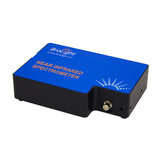
共1台
光纤光谱仪在岩石反射光谱的测量
应用领域
地矿检测样品
非金属矿产检测项目
颜色采用Brolight公司的微型光谱仪, 可无损化检测岩石样品. 同时Brolight光谱仪体积小巧, 操作方便, 非常适合随身携带及户外操作。
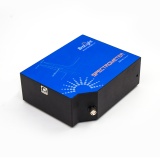
共1台
光纤光谱仪在颜色测量领域的应用
应用领域
其他检测样品
其他检测项目
反射率反射颜色测量的原理就是测量样品的反射率,然后通过选择照射光源,计算得到样品在某种光源的照射下面的颜色参数, XYZ 或者Lab。一般来说,固体和粘稠液体的颜色测量可以通过不同的实验布局来实现,如通过反射探头或积分球。对于不同的应用,如测量纺织品、纸张、水果、酒类和鸟类羽毛等颜色需要使用不同的探头。Brolight 光谱仪软件内含颜色测量模块,测试简单快速,并且可以根据您的应用做灵活的配置。

共1台
光纤光谱仪在LED测量领域的应用
应用领域
电子/电气检测样品
照明产品检测项目
主波长、色坐标、光强、色温、输出光功率等Brolight光谱仪小巧的设计可以集成到各种自动化系统中,采用光纤采集光信号及传输,搭建十分方便。尤其是BIM-6002A光谱仪最低积分时间可达0.5ms,在高速筛选中优势尽显。

共1台
光纤光谱仪在吸光度测量领域的应用
应用领域
石油/化工检测样品
酸检测项目
浓度Brolight 光谱仪基于模块化设计,您可以根据不断变化的实验需求变换设备布局;可更换的设备布局、不断升级的实验操作和应用使得现在和
将来的多种实验应用成为可能。

共1台
光纤光谱仪在透过率测量领域的应用
应用领域
玩具/消费品检测样品
眼镜检测项目
透过率实现光谱的透过率测量,通常需要光谱仪、光源、光纤、测量支架、标准参比样品和测量软件等。Brolight为用户提供了以光谱仪为核心的光谱测量设备。利用这些配置丰富的设备,就可以搭建各种常见的光谱测量系统。每个组成的测量系统都有其适用的光谱范围。因此,需要根据用户的实际需求,选择合适的光谱范围。

共1台
科研领域 —— 常见光源的光谱特性研究
应用领域
电子/电气检测样品
其他检测项目
光谱分布采用Brolight公司的微型光谱仪, 基于CCD快速采集原理, 能够快速测量并分析各种光源的光谱分布情况, 同时ms级别的采集速度能够实时地分析各光源的光谱稳定性, 结合软件的自动寻峰和FWHM测算功能, 可以更加直观地了解各光源的光谱分布特性。

共1台
氧气、pH及二氧化碳的测量及图像化研究
应用领域
检测样品
检测项目
Measure and Visualize Oxygen, pH or Carbon Dioxide,Distributions in 2D for Biological Research.
氧气、pH及二氧化碳的测量及图像化研究,生命科学研究中的2D分布图。

暂无关联产品
在线测量生物培养装置中的溶解二氧化碳
应用领域
生物产业检测样品
其他检测项目
Online Monitoring of Dissolved CO2,Measuring Dissolved Carbon Dioxide in Microfluidic Devices for Biological Application Using a Flow-Through Cell.
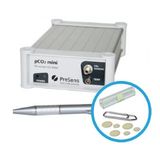
共1台
荧光淬灭法测量食品包装的透氧性和氧气残留
应用领域
造纸/印刷/包装检测样品
包装检测项目
利用荧光淬灭探头测量氧含量。同一种探头既可以测量食品包装顶层空间内的气态氧,又可以测量饮料中的溶解氧。测量时可以利用针式微型探头插入食品包装,进行微创测量;也可以利用非接触式探头,进行非接触式测量密闭饮料包装中的氧气残留或者包装的透氧性(测量时不容开启容器)。
检测下限1ppb。
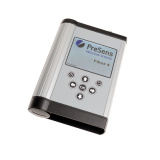
共1台
Laserline公司产品应用文章
应用领域
检测样品
检测项目
Laserline激光器的加工速度和稳定性都十分出色。封装半导体激光器的机箱设计有温度控制装置,可使系统在最恶劣的气候条件下使用和运输,并确保激光系统在到达客户手中时,可以立即投入使用。

暂无关联产品
CEO公司最新产品应用文章
应用领域
检测样品
检测项目
高功率QCW半导体阵列的可靠性研究;PowerPULSETM增益模块;用于SSL泵浦的高密度脉冲激光二极管阵列;QCW二极管阵列在80X和8XXnm处的可靠性研究;千瓦级,稳定波长激光二极管阵列;使用CEO PowerPULSETM模块进行激光脉冲序列放大
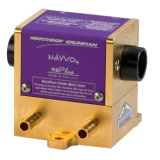
共1台
科研人员利用NanoSight纳米粒度仪研究自我排列的聚合物和DNA分子
应用领域
检测样品
检测项目
Jordan Green博士的生物材料及药物输送实验室主要的研究方向是细胞工程和纳米生物。纳米技术的研究,对于不同的给药系统具有特殊的意义。 由于原先使用动态光散射技术,格林博士和他的团队现在又使用了Nanosight公司研发的NTA跟踪分析技术,从而两种方法的研究形成了互补。 NTA技术对于多分散的样品具有突出的贡献。

暂无关联产品





